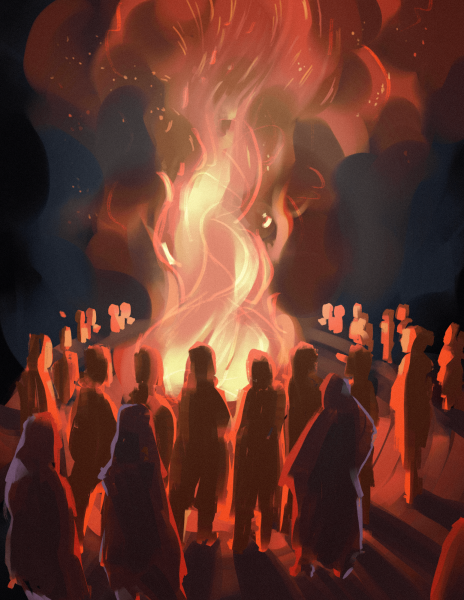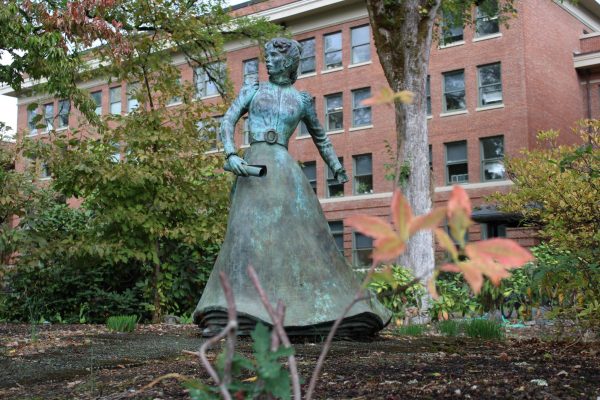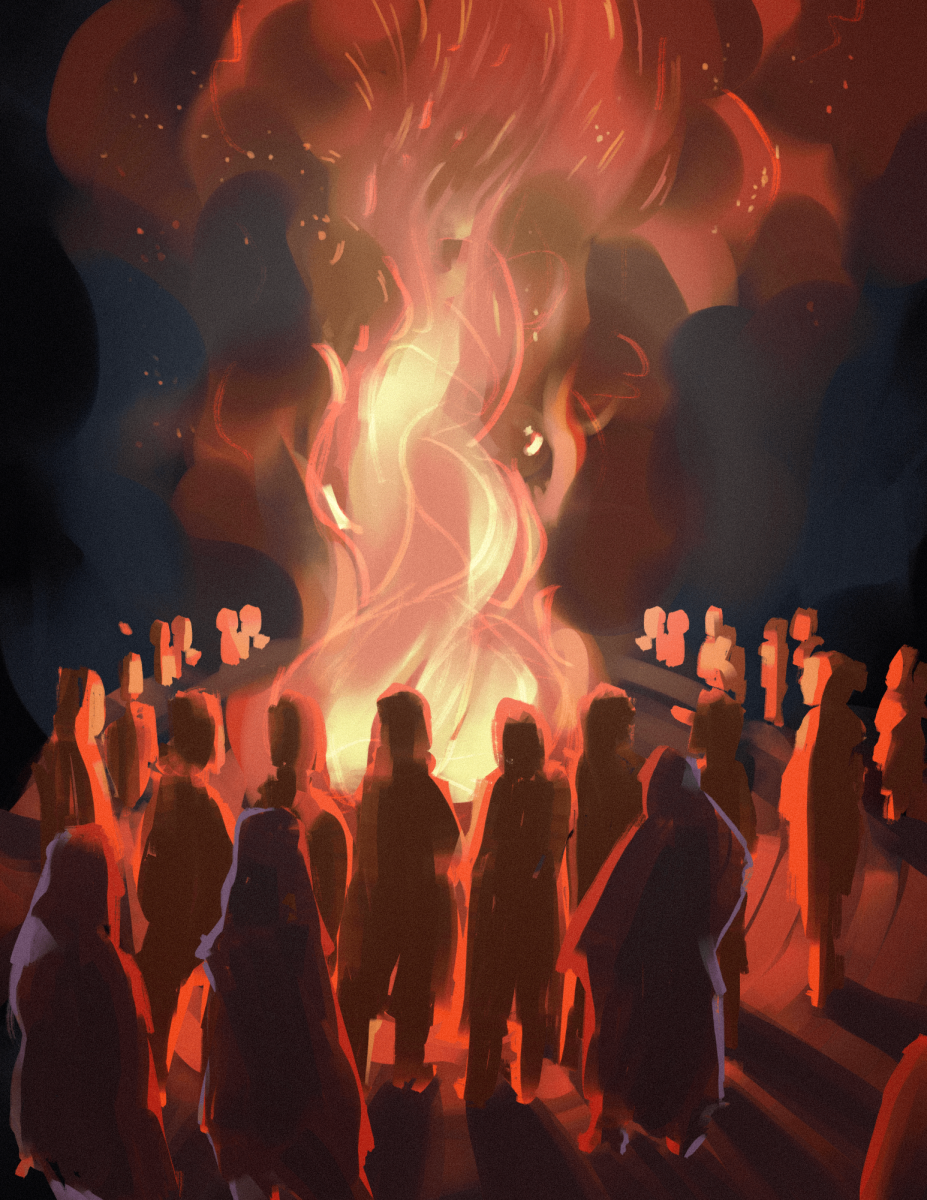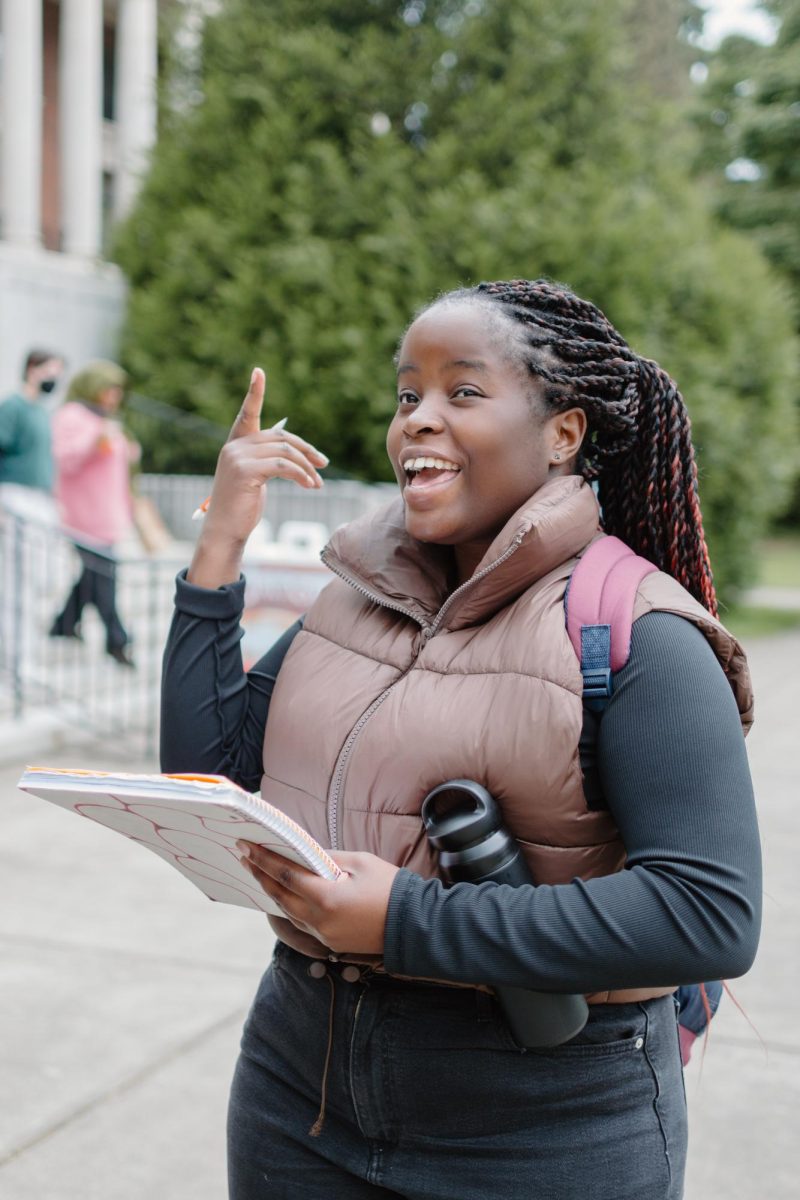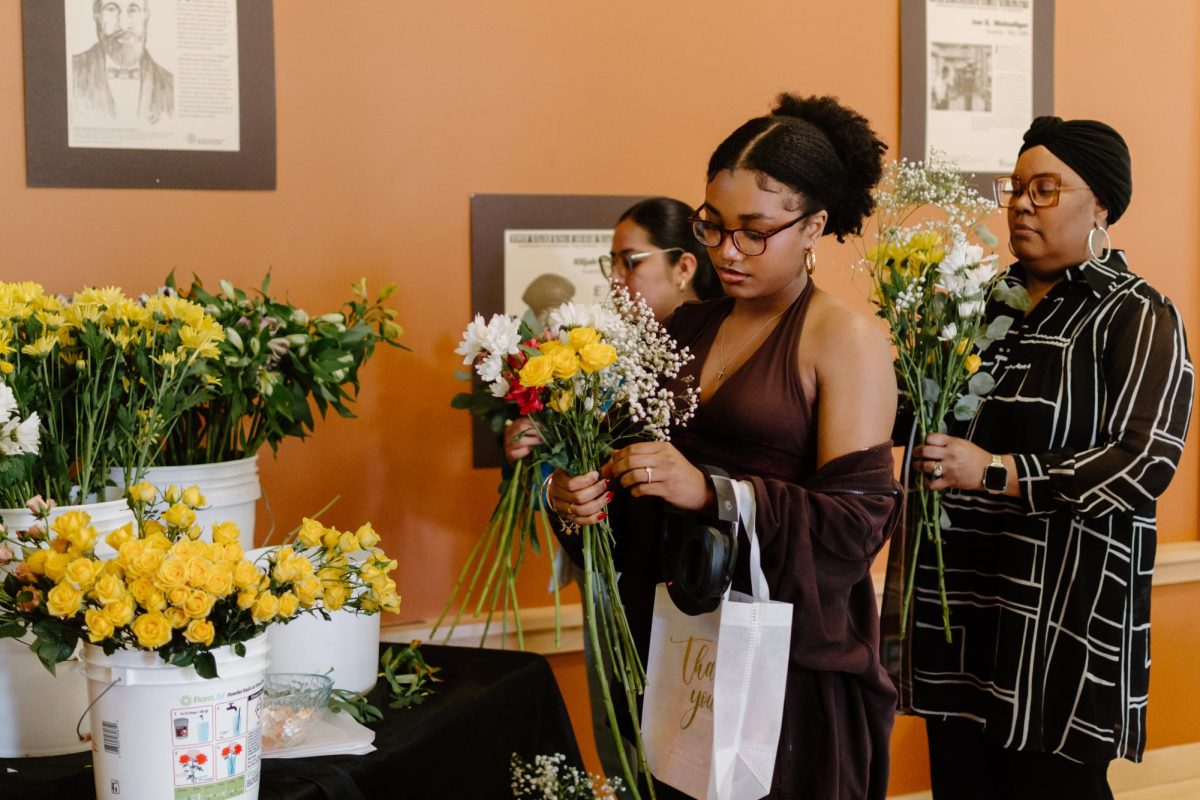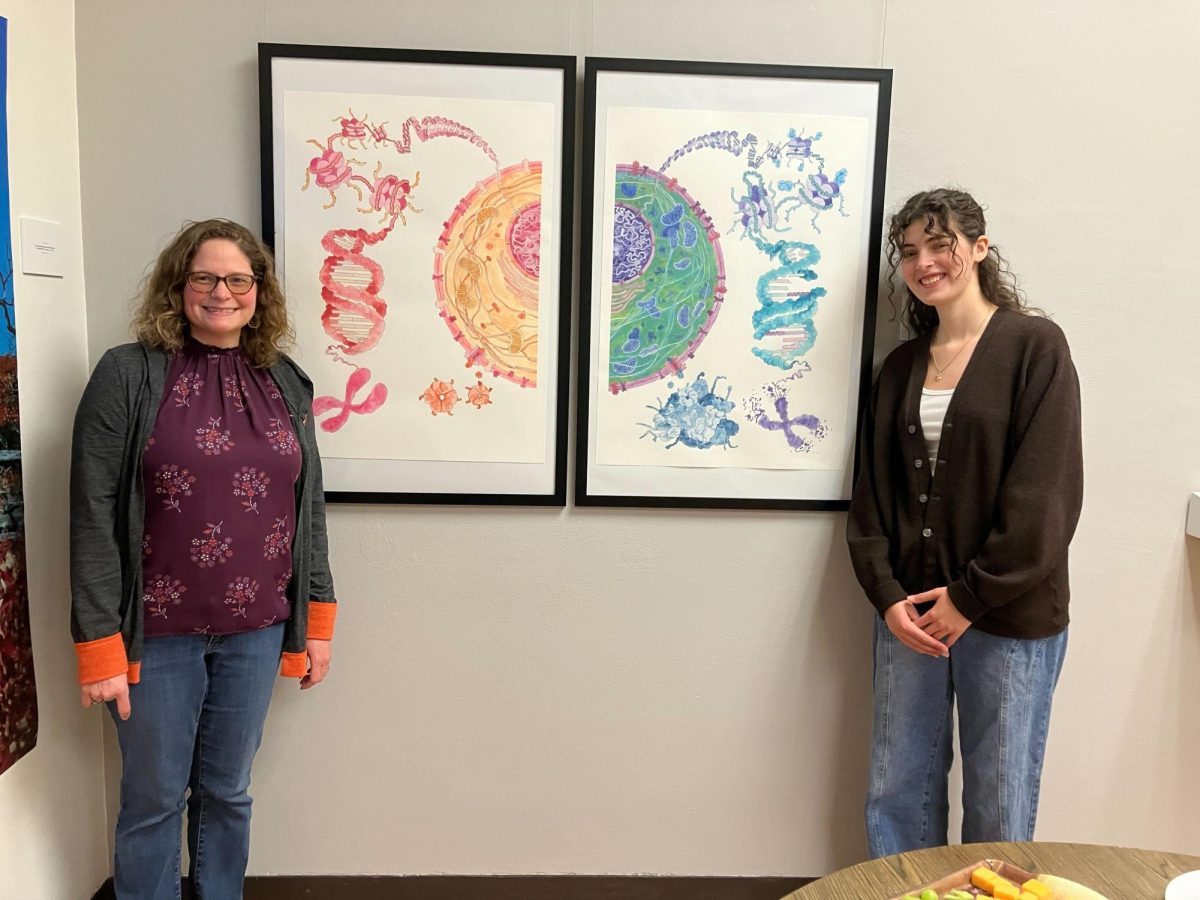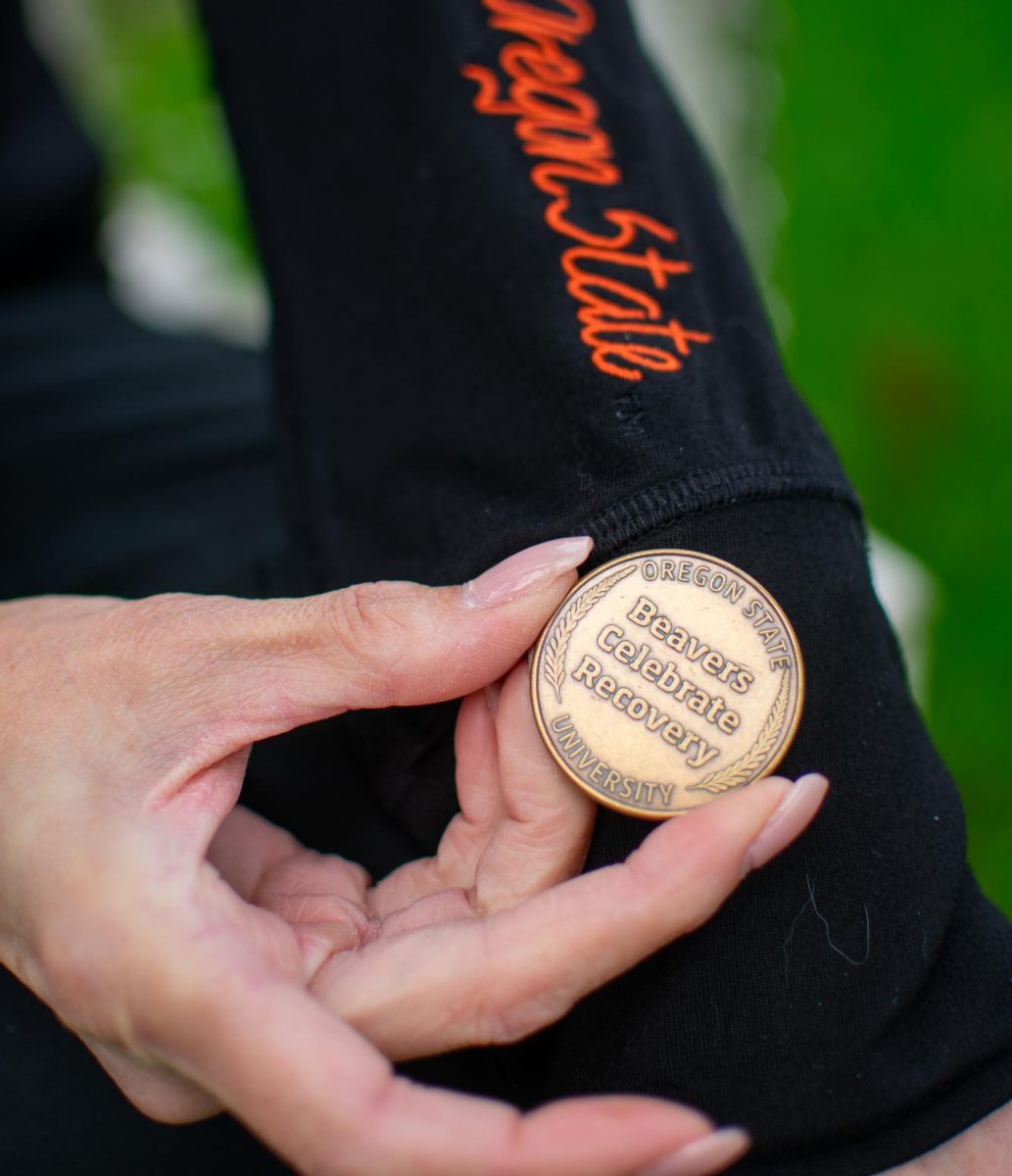Rolling, shouting, rolling, screaming, rolling, praying, over and over again. Usually 12 hours for a typical praying session, although this time it could easily be 24 hours.
They’ll keep rolling amongst the floor, praying for God to accept them into Heaven.
Or until Edmund Creffield tells them to stop.
In the early 1900s, Corvallis was home to the “Holy Rollers,” or the “Brides of Christ Church,” a so-called “cult,” or rather, a new religious movement that took the town by a storm.
Multiple prestigious women left their families and homes to follow Creffield’s religious teachings. Creffield believed he was God’s right-hand man, a messenger or perhaps even Jesus Christ himself.
At first, he merely preached the Bible while he was a soldier in the Salvation Army in Portland in 1899. He quit when he “heard” God disapprove of the army, for they solicited for money and “its people were not entirely of God,” according to the book, “Holy Rollers: Murder and Madness in Oregon’s Love Cult” by T. McCracken and Robert Blodgett.
Not much else is known about Creffield’s early life, though it is assumed he was born around 1873 in Germany.
When Creffield came to Corvallis, it was a small farming town, along with Oregon Agricultural College (Oregon State University today). Due to its small size, everything was reported in the town’s newspapers, Corvallis Times and the Corvallis Gazette. Everyone knew everything about one another; if anyone left or came into town, their name was in the paper for everyone to know.
People got word of Creffield fast.
Creffield started preaching to church-goers, exclaiming that “God revealed himself to me. He came in the form of messages. He spoke to me. I heard His voice.”
When asked to prove this said-communication with God, he assured everyone it cannot be explained, for it was a unique experience that couldn’t be described.
Instead, if someone learned to be worthy of this same communication with God, their names would be inscribed on a Holy Roll in Heaven and they better act fast, there were a limited number of spaces on the roll, or so Creffield said.
One by one, Creffield charmed or “hypnotized” women to join him, to seek refuge from their sinful lives. Though, the women led relatively sin-free lives, well-off lives to be precise.
One of the women, Cora Hartley and her daughter, Sophie Hartley, left their husband and father, Lewis Hartley, one of the wealthiest men in Corvallis, owning nearly $1.3 million. That would be around $45.6 million in today’s money.
During his first preaching, Corvallis women rolled about the ground for hours, which only ended when they reached the 12th hour. More women began joining the floor, wailing and rolling about until God spoke to them. After almost being fully emotionally and physically exhausted from praying, Creffield announced that they were now “God’s Anointed.”
Most of the group were women but a few members were men.
“That was his job … to preach so persuasively that people converted to what at the time would’ve been mild evangelical Christianity,” said Amy Koehlinger, associate professor in the school of history, philosophy and religion, who teaches the Brides of Christ in her Religion in the United States course. “I don’t know why (he chose) Corvallis. He created what he thought was going to be a permanent movement.”
Police prohibited Creffield from his gatherings within Corvallis limits, so he told his followers God will send them three miles out of town, on Smith Island, where they would spend the summer participating in this new religious movement.
“When these movements emerge, (there) tends to be some kind of social disruption, where people’s connections to other meaningful sources of identity in the world are somehow disrupted, the future looks uncertain (or) all the tools that people had for navigating the world are no longer useful for them,” Koehlinger said.
Koehlinger explained that Creffield’s followers had logic for why they joined this movement, even though we might not fully understand it. She used the example of the Johnstown movement, where the largest mass suicide in recorded history had taken place.
“There’s actually a logic to why they all committed mass suicide,” Koehlinger said. “I mean, they could have given you a story about why this was a perfectly reasonable action to take.”
Koehlinger mentioned that the OSU’s School of History, Philosophy and Religion stray away from using the term “cult” to describe these new religious movements, as people tend to see the word in a negative light, as many new religious movements aren’t bad.
Creffield had commenced for the women to kiss him during “one-on-one” praying ceremonies, or they would be sent to Hell. There were also alleged rumors of orgies and other physical relations among group members.
During the time spent at Smith Island, Creffield was referred to as “Joshua,” as in the Holy Prophet. He taught them what it meant to be hungry and cold, giving them only bread and water for a week, and commanding them to wear little clothing.
The Holy Rollers burnt furniture, along with chickens, a cat and a dog. The burning of animals was purely for “sanitary reasons” and not sacrifice, as the police had thought at the time.
Yet, Creffield admitted that he would sacrifice a child, “if the Lord bade it.”
The Corvallis townspeople were sick of this nonsense and in February of 1904, a group of Holy Roller protesters attacked Creffield, covering him in tar and feathers, and ordered him to leave town.
Creffield didn’t listen, returning to Corvallis the very next day and married follower, Maud Hurt, at the Albany courthouse.
His original chosen woman to be married to, 16-year old Esther Mitchell, was pulled away before Creffield had the chance. Her concerned sister sent Mitchell to the Boys’ and Girls’ Society, an institution for homeless and abused children, before Creffield got the chance.
Most of the other followers were later sent to the Oregon State Insane Asylum in Salem, while those under 18-years-old were sent to the same society as Mitchell.
Shortly after being married, Hurt moved back to her parents’ house, where after talking long with her father, she “made up her mind to have nothing more to do with (Creffield).” Then Creffield moved to Portland.
Things settled for a bit, however, in March Donna Starr (Hurt’s aunt) signed a statement claiming she had adulterous relations with Creffield. At the time, adultery was a serious criminal offense, so Creffield went into hiding. A man-hunt for Creffield began.
In July, Creffield was found naked and starving under the house of follower, Sarah Hurt. He was found guilty and was held at the Oregon State Penitentiary until 1906. Once released, he alleged that he was Christ, risen from the dead.
“When he was released from jail, one of the statements he made was that (he was responsible for) the San Francisco earthquake and he said, ‘God was judging San Francisco just like God is going to judge Corvallis,’” Koehlinger said.
Creffield moved to Waldport, Oregon and most of his followers joined him. The husband of Cora Hartley and father to Sophie Hartley followed Creffield and attempted to shoot him, but wasn’t successful as he used the wrong kind of bullets and “clicked harmlessly.”
Eventually, Creffield and his wife, Hurt, left the group in an attempt to start a colony in Canada. However, George Mitchell, the brother of follower, Donna Starr, tracked Creffield to Seattle, Washington, where he killed Creffield in front of witnesses.
George Mitchell was acquitted of his crime for the King County defense attorney claimed “the taking of the law in one’s own hands, under such circumstances, to mete out summary justice is almost excusable,” according to Oregon Encyclopedia.
Some OSU students put their input on the matter of whether or not George Mitchell should be prosecuted and their thoughts in general on the Holy Rollers new religious movement.
“Unless (George Mitchell) was actively being attacked, it is still illegal … if we don’t uphold our laws and their circumstances,” said Naomi Ford, a fourth-year biochemistry and biophysics major.
“You can’t be doing Robin Hood,” said Alyssa Almer, a fourth-year bioengineering major.
Almer wasn’t too surprised this new religious movement occurred, other than the fact it happened in Corvallis.
“There have been so many incidents throughout the country, historically, that have the exact same thing happening over and over again with Christianity and extremism and brainwashing that didn’t surprise me,” Almer said. “But it was really interesting, like I didn’t know that happened in Corvallis.”
Sophia Matthews, fourth-year architectural engineering major, found it surprising that the women let Creffield and Hurt leave with virtually no obligation when he announced his departure to Canada.
“I am, of course, sorry that I have been called upon to take any man’s life … They were good Christian girls, until this man came along,” George Mitchell said, according to the book. “It was willed that I meet him today and Creffield suffered the end that he was entitled to.”






